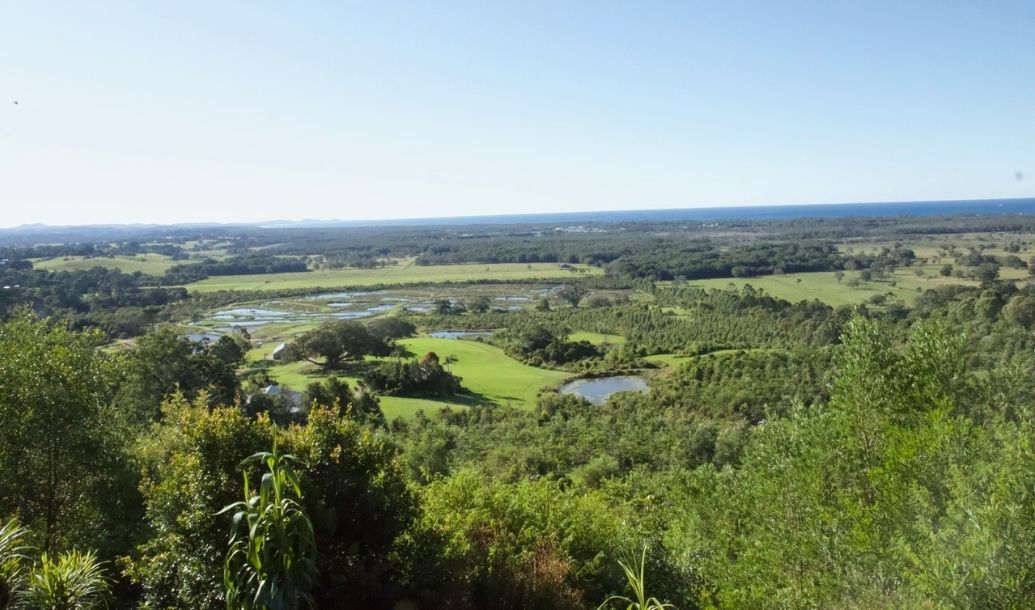Along the Byron Bay-facing ridge of St Helena escarpment – the steep hillside which timbergetters once used to launch giant logs to ships waiting in the Bay – a hidden rainforest is emerging. For around 15 years, private landowners have taken it upon themselves to fund extensive replanting of rainforest, creating 250 acres of reborn forest along 1.5 kms of the winding St Helena Road.
It’s another incredible example of what the regeneration community in the Northern Rivers has achieved. Modelled on the neighbouring Hayters Hill Nature Reserve, the planting now connects two sections of regenerating subtropical rainforest, which is also connected to 100 acres of constructed wetlands and heathland further below, making it one of the most ecologically significant restoration efforts undertaken in the region.
The speed of growth along the escarpment has been incredible, according to Tony Kenway, who has overseen the project since 2015. A member of the Protestors Falls blockade in the 70s, Kenway was engaged by the landowners to manage the planting of new sections of the escarpment. These have since been joined with plantings on lower sections of the hillside, creating a combined area of 250 acres of regenerating forest of varying species and maturity.
To populate the escarpment with the right species, Kenway drew on the extensive surveys of Hayters Hill Nature Reserve conducted by Rob Kooyman and others. Exposed to sea breezes, the composition is slightly drier than what would be found in more protected patches of the Big Scrub, with species like Thorny Yellowood, White Beech, Silver Ash and Small-Leaved Lilly Pilly dominating.
An initial planting of 30,000 trees was conducted on the newer section in 2015 using a mix of 20% pioneers and proven local species. Incredibly quick canopy capture in 3-4 years enabled the introduction of an additional 1,000 trees from a variety of threatened local species.
With a mix of soil types, elevation and exposure, Kenway’s approach was to “listen to the land”. The area and its surrounds have been revegetated with a mix of subtropical dry and notophyll vine forest, hoop pine forest, lowland melaleuca wetlands, dry sclerophyll forest and coastal heath.
With this mix of habitats, the flora biodiversity and fauna activity returning has been remarkable. “The focus for the owners was to create a wildlife sanctuary, where endangered fauna and flora can flourish and repopulate beyond our boundaries,” Kenway said.
Bird life is returning in droves and the plantings are displaying the trademark lush, thick vegetation of the Big Scrub. By listening to the land and drawing on the great body of knowledge that exists within the regen community, hillsides once used to transport timber to the coast are regrowing at an astonishing rate.




